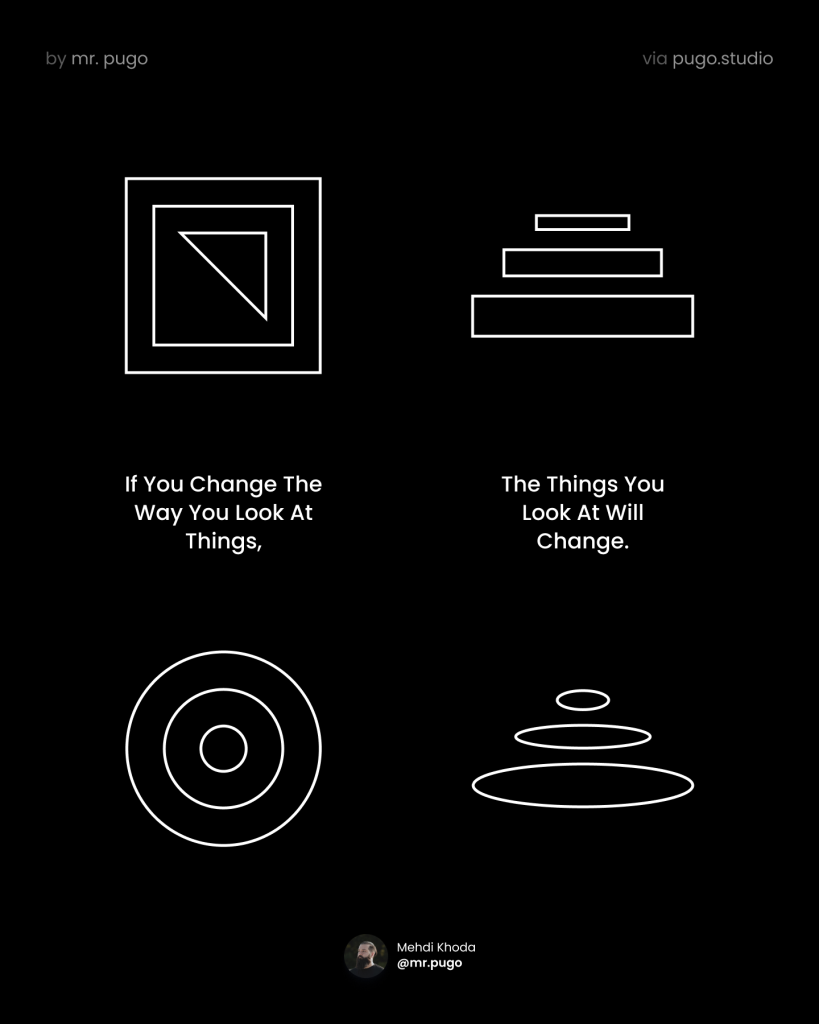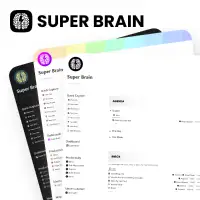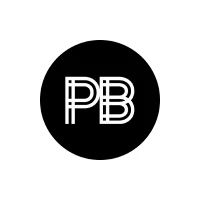Beyond Vision: Unleashing the Power of Perception with “Change the Way You Look at Things”

Power of Perception: Change the way you look at things philosophy.
Shifting Horizons: The Transformative Power of Changing Perspectives
In the vast canvas of life, a profound truth emerges: “If you change the way you look at things, the things you look at will change.” These words hold the key to a transformative power, an alchemy that occurs when we dare to alter the lens through which we perceive the world. This philosophy invites us to embrace a subtle but profound shift—a journey where the familiar becomes extraordinary, and the ordinary reveals its hidden wonders.
Discovering New Dimensions in the Familiar
Imagine the world as a tapestry, woven with threads of experiences, emotions, and perspectives. When you change the way you look at this tapestry, you unearth new dimensions within the familiar patterns. It’s like stumbling upon a hidden portal to a world that exists within the mundane—a dimension waiting to be explored, understood, and appreciated.
Personal Reflection: Consider a recent moment when a change in perspective revealed something new in the familiar. How did this shift enrich your understanding of the situation?
The Malleability of the World: A Responsive Canvas
This wisdom whispers that the world is not fixed; it is malleable, responsive to the gaze of the beholder. As you shift your perspective, the world around you transforms in response. It’s a dynamic dance between perception and reality, where your outlook shapes the very nature of what unfolds before your eyes.
Personal Insight: Reflect on a time when changing your perspective influenced your experience of an event or situation. How did the malleability of the world respond to your altered gaze?
The Nuanced Art of Seeing Differently
The art of looking at things differently is nuanced—a delicate dance between openness and curiosity. It’s not merely about seeing the world through a new lens but about embracing the potential for growth, understanding, and a richer experience. The nuances lie in the subtlety of your gaze, the willingness to explore the uncharted territories of perception.
Personal Reflection: Consider a situation where you consciously chose to see things differently. How did this nuanced art of looking enrich your perspective?
Unlocking the Potential for Growth
In the act of shifting perspectives, you unlock a treasure trove of potential for personal growth. It’s a process of shedding preconceived notions, challenging assumptions, and embracing the unfamiliar. When you view challenges as opportunities and setbacks as stepping stones, the landscape of your personal development expands exponentially.
Personal Insight: Think of a challenging situation where changing your perspective led to personal growth. How did this transformative journey shape your outlook on future challenges?
Seeing the World as It Could Be
At its core, this philosophy is an invitation to see the world not just as it is but as it could be. It’s a journey beyond the surface, where imagination and possibility reign supreme. When you adopt this lens, the mundane transforms into the extraordinary, and the routine becomes an adventure waiting to unfold.
Personal Reflection: Envision a familiar aspect of your life through the lens of possibility. How does seeing the world as it could be add a sense of wonder to your everyday experiences?
The Magic of Perception: A Richer Experience
The magic unfolds when you choose to see the world through the lens of possibility. Suddenly, the mundane is tinged with enchantment, and the ordinary reveals its extraordinary facets. Life becomes a richer experience as you navigate its intricacies with a perspective attuned to the potential for beauty, growth, and serendipity.
Personal Insight: Recall a moment when a shift in perspective turned an ordinary day into something extraordinary. How did this magic of perception enhance your overall experience?
Embracing the Philosophy: A Personal Invitation
As we traverse the realms of changing perspectives, it’s not just a philosophy; it’s a personal invitation. An invitation to approach life with curiosity, to gaze upon challenges with resilience, and to savor the nuances that unfold in every moment. It’s an acknowledgment that the way you look at things shapes the narrative of your life—a narrative filled with richness, depth, and the beauty of diverse perspectives.
Personal Reflection: How can you consciously embrace this philosophy in your daily life? Consider a specific situation where changing your perspective could lead to a more enriching experience.
What are some examples of perception?
- Visual Illusions:
- Optical illusions, like the famous Rubin’s Vase, showcase how our brain interprets visual information. In the Rubin’s Vase illusion, the same set of lines and shapes can be perceived alternately as a vase or two faces, highlighting the subjectivity and malleability of visual perception.
- Selective Attention:
- The phenomenon of selective attention occurs when individuals focus on specific aspects of their environment while ignoring others. In the classic “Gorilla in the Midst” experiment, participants were asked to count basketball passes, and many failed to notice a person in a gorilla suit walking through the scene, emphasizing the limitations of attention.
- Cultural Influence on Taste Perception:
- Cultural factors significantly impact how we perceive taste. In some cultures, certain flavors or textures may be considered desirable, while the same attributes might be disliked in another cultural context. This illustrates how cultural background shapes our sensory perceptions, including taste.
- Auditory Illusions:
- Auditory illusions, such as the Shepard Tone, play with our perception of pitch. The Shepard Tone creates the illusion of a never-ending ascending pitch, challenging our auditory system’s ability to perceive changes in frequency and demonstrating how our brains interpret sound.
- The Cocktail Party Effect:
- The cocktail party effect refers to the ability to focus on a single conversation amid a noisy environment. In a crowded room, you can tune in to a specific conversation even though there are numerous other conversations and background noise. This showcases the brain’s remarkable ability to filter and prioritize auditory stimuli based on relevance.
These examples highlight the dynamic and subjective nature of perception, influenced by various factors such as attention, culture, and context. They illustrate that what we perceive is not always a straightforward representation of objective reality but is shaped by the intricate workings of the mind.
Conclusion: A Journey Beyond the Gaze
In the dance of changing perspectives, we embark on a journey beyond the gaze—a journey where the world becomes a responsive canvas, waiting to unfold its wonders. “If you change the way you look at things, the things you look at will change.” Let these words be a guiding light as you navigate the tapestry of life, seeing not just what is, but what could be—an ever-evolving narrative shaped by the transformative power of changing perspectives.
Now, You might have some questions in your mind, don’t worry! I got you.
How does changing the way I look at things affect my daily life?
Changing your perspective can add richness and depth to your daily experiences, turning the ordinary into the extraordinary.
Is it possible to consciously alter my perspective, and how do I do it?
Absolutely! Consciously altering your perspective involves a nuanced approach—cultivating curiosity, openness, and a willingness to explore new angles.
Can changing perspectives lead to personal growth?
Yes, shifting your viewpoint often unlocks potential for personal growth, challenging assumptions, and fostering resilience in the face of challenges.
How does altering my perspective turn challenges into opportunities?
Changing the way you view challenges transforms them from obstacles into opportunities for learning, growth, and creative problem-solving.
Can I apply this philosophy to my professional life for a more innovative approach?
Certainly! Altering perspectives in your professional life fosters innovation, creativity, and a more adaptive approach to problem-solving.
Is there a difference between changing my perspective and positive thinking?
While positive thinking is one aspect, changing perspectives involves a broader shift—embracing diverse viewpoints, challenging assumptions, and exploring new dimensions.
How can I navigate the fine line between being open-minded and maintaining my values?
Navigating this line involves a delicate balance. It’s about being open-minded to new perspectives while anchoring your choices in your core values.
Can changing the way I look at things lead to a more fulfilling life?
Absolutely! Embracing this philosophy often results in a more fulfilling life, enriched with meaning, depth, and a heightened sense of appreciation.
Are there practical exercises or techniques for changing perspectives in daily life?
Yes, practical exercises include journaling, seeking diverse opinions, and consciously reframing situations to explore alternative viewpoints.
Can changing perspectives foster better relationships with others?
Certainly! Embracing different viewpoints enhances empathy, communication, and understanding, contributing to healthier and more meaningful relationships.

















